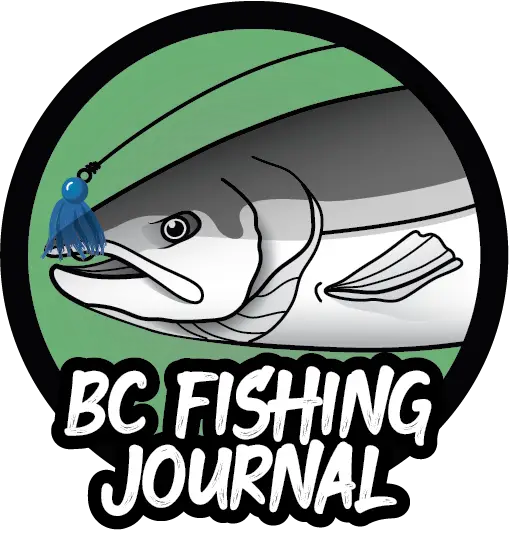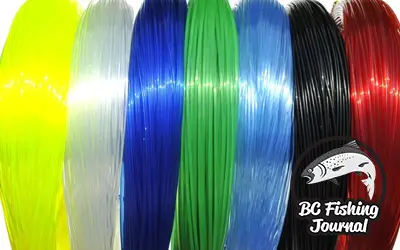
Best Fluorocarbon Line For All Fish Species
Fluorocarbon line is a game changer in the fishing industry. An near invisible and low stretch line that has a number of benefits for any type of fishing application or species. Whether using as a mainline or leader line, Fluorocarbon is quickly becoming one of my favorite lines for a variety of fishing situation. If you’re not using or tried this line you’re missing out.
In this article I’ll outline the features, benefits and disadvantages to fluorocarbon. I’ll give some weight recommendations based on different species or environments, and also some great fishing knots to use for fluorocarbon. Lastly, I’ve included my top 5 fluoro mainline and leader lines that have the best ratings and ones I use all the time.
5 Best Fluorocarbon Fishing Lines
| Preview | Line | Rating | |
|---|---|---|---|
 | Seaguar Invizx |  |  |
 | KastKing FluoroKote |  |  |
 | Sufix Invisiline |  |  |
 | P-Line Floroclear |  |  |
 | Seaguar Abrazx |  |  |
** Full Reviews further down the page.
Do I have a Seaguar obsession?
Here are a few of my fluorocarbon mainlines and leader lines.
Features and Benefits of Fluorocarbon
Low Visibility to the Fish
The biggest benefit fluorocarbon line has over any other line is its near invisibility underwater. You do not want the fish to see or be spooked by your fishing line and only want them to see the lure/bait being used. Fluorocarbon is made with properties that give it a similar refractive index to water (blends in with water vs. reflecting light in water), this is what keeps the line near invisible in water versus other lines like monofilament which have a higher refractive index.
Low Stretch Line
Fluorocarbon line is designed to so that is has a very low stretch capability. This can be both a pro or a con depending on how you’re using it. If you’re looking for line sensitivity to feel any bump or nibble from your line Fluoro does this very well. If you need a little more forgiveness (stretch) when you’re setting a hook or dealing with larger fish that may require a little more give give from your line fluoro may not be the best option.
Waterproof
Fluoro is a denser line that does not absorb water like a braided line does. That said, it will sink better and faster than most fishing lines out there. This can be very helpful when you’re trying to get smaller baits to the bottom fast.
Abrasion, Memory and Diameter Fluorocarbon vs. Monofilament
As mentioned Fluorocarbon is a denser and harder line which makes it more abrasion proof than mono. Therefore, Fluoro will handle better around structure, foliage and any other environment that will cause friction on the line. However, with a more abrasive line you do lose pliability and softness in the line which can make it harder to cast, tie knots or generally work with.
Along with the above, Fluoro has a higher line memory than monofilament so you’ll have more coiling on your line and higher risk of a reel backlash (“bird’s nest”) when casting.
As for the diameter the two lines are the same, so there is no added benefit here, like getting more line on a spool.
5 Top Fluorocarbon Fishing Lines
The only downside to this line is that it can be somewhat sensitive to abrasion on rocks or sticks in the water, so it may be more suitable to use out of cover. To reduce the chance of the line being cut, you could use a long metal leader or create your own leader with an abrasion-resistant line. Overall, you can expect the Seaguar Invizx to perform very well while fishing for that one elusive trophy fish that always seems to scare off when it sees fishing line.
Pros
- Very low visibility
- Ties good knots
- Smooth casting
- Very strong
- Low line memory
Cons
- Low abrasion resistance
However, you probably won’t have much luck with this line in a baitcaster or with a light lure, since it can easily backlash after casting. Knots may also slip if you don’t secure them properly, so make sure that you tie an extra knot or two on. All-in-all, this is a great line for fishermen who throw those expensive lures out in cover and like them diving quickly.
Pros
- Low visibility
- Superior abrasion resistance
- Smooth casting
- Sinks quickly
- Great reel capacity
Cons
- Can be prone to backlashes
- Not as easy to tie knots
The line visibility is still quite low and it could be used in most situations if you’re not fighting a super flighty fish. To help deal with the visibility of the line, you may consider fishing it in somewhat murky water instead of crystal clear water. Since it is highly abrasion-resistant, it tends to be very slippery and difficult to hold knots in, so extra care may be necessary to avoid losing a fish or lure. Overall, it is a wonderful choice if you need a line that is extremely resistant to scrapes and cuts in the water.
Pros
- Superior abrasion resistance
- Very strong
- Smooth casting
- Minimal backlash
Cons
- Poor knot strength
- Some line visibility
Although you could use it in somewhat clear water, it isn’t completely translucent and some fish may decide not to bother with your bait, especially if they’re a finicky fish like a carp. Since it has a weak abrasion and shock resistance, it may be more suitable for fishing in open water for species that don’t pull aggressively.
Pros
- Exceptional knot strength
- Smooth casting
- Low line memory
- Minimal backlash
Cons
- Acceptable line visibility
- Weak abrasion resistance
Since it does perform similarly to monofilament, you can expect to have some amount of line memory for the first few casts. Once it has had a chance to stretch out, this line can be a great all-around choice for any fisherman looking to try out fluorocarbon, no matter what type of reel you use.
Pros
- Extremely strong
- Low visibility
- Minimal backlash
- Sensitive bite detection
Cons
- Line memory out of the box
Best Leader Line
If you’re not using fluorocarbon for your mainline it’s a good idea to have some sort of leader line that sits between your mainline and hook/lure. These can be short leaders that sit under a float, or longer shock leaders that are used to absorb a strong fish bite and run. When choosing a leader line I’d recommend getting a higher end line. There’s no sense in buying an expensive mainline and cheap leader line. The leader line is the closest line to the fish and one that ties to the hook so it’s essentially the most important line on your setup (IMO).
Fluorocarbon is one of the best leader lines to use. It’s invisible underwater, it has no stretch and is incredibly durable around rocks/structure. Having an invisible leader connected to your visible line is smart fishing. A bright or highly visible line may spook the fish and takes away from your lure/bait presentation, whereas fluorocarbon does the opposite in highlighting your presentation/lure. Here is my all time favorite leader line by Seaguar (the inventors of Fluorocarbon).
Pros
- Highest quality fluorocarbon leader on the market
- Incredibly strong
- Softer and easy to use (tie knots)
- No stretch
Cons
- Higher cost
Best Fluorocarbon Line for Bass and Trout
Bass mouths are much larger and tougher than Trout as they have small sensitive mouths. This is why you can lip a bass and not a trout when handling a fish. It’s also why bass lures and hooks are much larger. Trout fishing requires a more finesse approach in lures and hooks.
So what does this have to do with Fluorocarbon line?
When choosing a fluorocarbon mainline for bass I’d recommend a getting a higher weighted line around 15 lbs to 20 lbs. For Trout, I’d recommend lighter 5 lbs to 10 lbs. This is not to suggest that Bass fight harder or are larger than trout species, it’s more geared to the rod action on the hook set for the species mouth. Hook sets with are much more aggressive for bass than trout, and to ensure you’re not breaking off a heavier line is recommended. Please keep in mind fish size should impact the weight of line you’re using as well.
Additionally, Trout can be more finicky and less aggressive than bass, so lighter line is better suited to handle smaller finesse lures/hooks. Lighter line is less visible than heavier line even though fluoro is near invisible.
Lastly, when you’re fishing for bass another reason for heavier line is the environment you’re often dealing with: heavier brush, foliage and structure. Trout can be under/near structure as well, but are typically fished around moving water (streams/, rivers, etc) so you won’t be dealing with the heavier foliage, etc. And again, a heavier line will help navigate the abrasion on your line in these types of environments.
Best Knot for Fluorocarbon Line
Because of the denser and stiffer structure of fluorocarbon it certainly is not as easy to handle or tie knots with. When using fluorocarbon I’d recommend perfecting a knot designed for fluorocarbon verses the same old knot you use with mono. In this video Gerald Swindle has a really great demonstration of a strong and easy to tie knot when using fluorocarbon.
Best Knot for Braid to Fluorocarbon Leader
The 2 most commonly used options for connecting braided mainline to a fluorocarbon leader is either by using a barrel swivel (tying each line to and end of the swivel) or connecting the two lines via knot. Either option offers pros/cons, if you’re constantly changing your leader line (e.g. have pre-tied leaders and hooks) and the length of the leader line is shorter (less than 3 feet) the swivel option can work well. However, if you’re using a longer leader the swivel connection will get caught in your rod eyes and may damage them and will certainly affect your ability to cast.
My favorite way to connect braid to fluorocarbon is by knot. There are lots of knot options, the most popular knot is the Double Uni Knot. Here is a helpful demonstration video on how to tie the double uni knot.
Conclusion on Best Fluorocarbon Fishing Line
Seaguar fluorocarbon fishing lines are the clear winner for me as they are the inventors of fluorocarbon line and have been in the business since the early 70’s. That said, Seaguar’s INVIZX line is my top choice for fluorocarbon for my mainline. And if you’re looking for the best leader line Seaguar’s Blue Label Fluorocarbon is miles ahead of everyone in my opinion. It’s a dependable line that’s easy to work with, I’ve always got this line with me on the water.
If you have any questions on Fluorocarbon lines or tackle/fishing related, drop me a comment below or email me (see Contact page). Tight Lines! Jesse
About the Author








